Why I Skipped HRT
Instead of HRT, I found a peptide-based approach that works with my body's natural processes.
- Menopause may thin your hair—but it doesn't have to. -
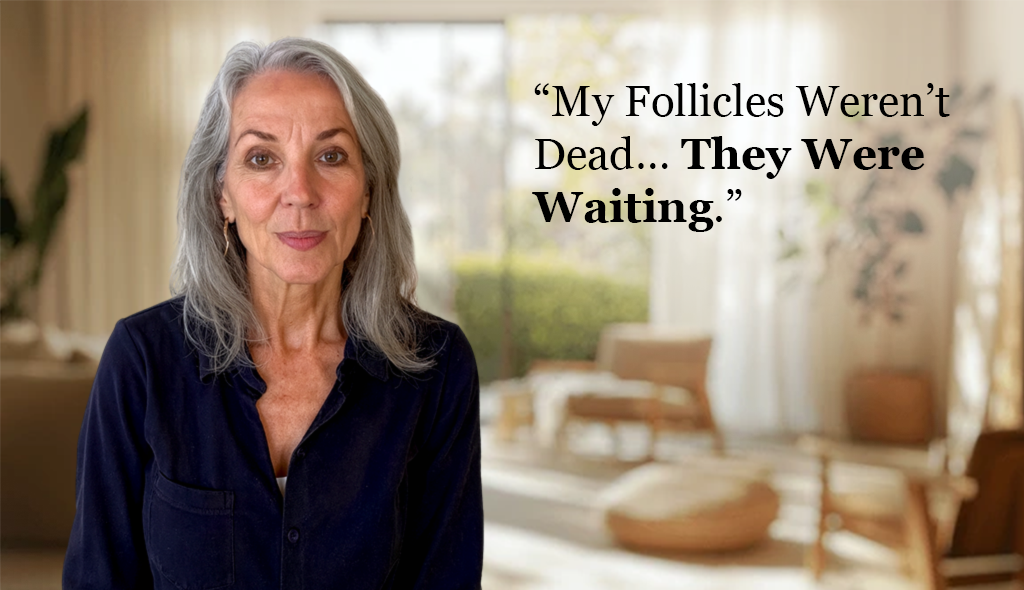
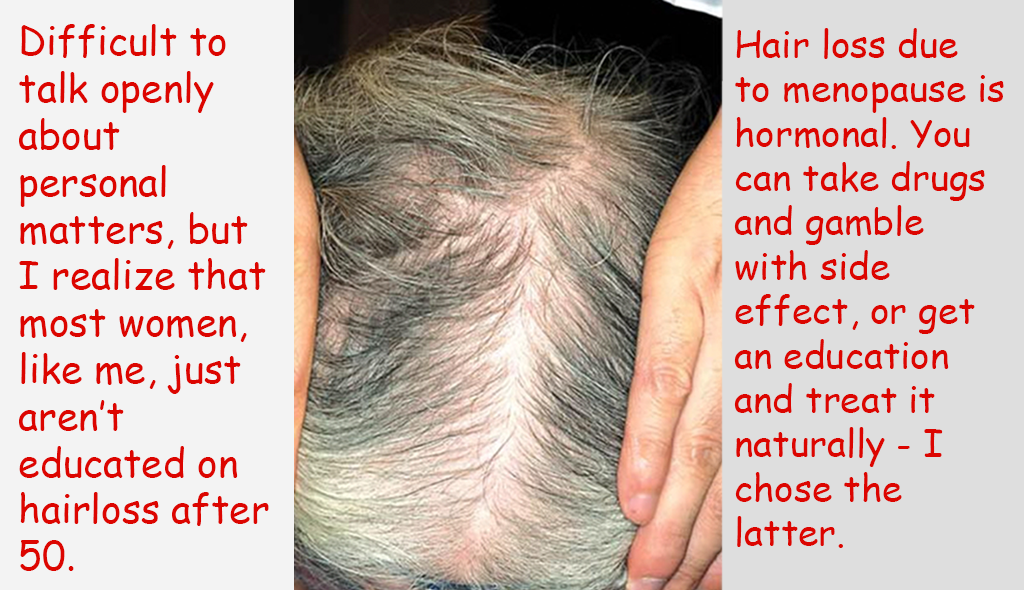
I'm Lisa Monroe. I'm 52, a yoga teacher and mom of two grown daughters. For most of my life, I never thought much about my hair—it just did what it did. But something changed in my early 50s. The hair around my temples thinned, and my part grew wider. My ponytail got sadder. And so did I.
I tried to chalk it up to aging, stress, or maybe just bad luck. I bought expensive shampoos, subscribed to supplement bundles, and even tried "scalp detoxes." None of it helped. I still felt like I was watching a part of me disappear.

What no one tells you is just how deeply menopause can affect your hair.
Your hair's growth phase shortens—and more follicles shift into the resting (or shedding) phase.
Testosterone becomes more dominant, triggering sensitivity to DHT (dihydrotestosterone).
Your follicles shrink, and your strands become thinner, weaker, and fewer.
For me, it wasn't just about losing volume—it was about losing a part of my identity. Every time I ran my hands through my hair or caught a glimpse in the mirror, I felt more disconnected from myself.
While inflammation plays a role for many women (especially those dealing with autoimmune symptoms or stress), the root for me was clearly hormonal. But I didn't want to go down the HRT route just to save my hair.

Instead of HRT, I found a peptide-based approach that works with my body's natural processes. No hormones, no side effects, just real results that actually last.

Instead of HRT, I found a peptide-based approach that works with my body's natural processes.
I considered hormone therapy. I even went to a specialist. But the risks just didn't sit right with me.
I was looking for a solution that aligned with my body—not one that manipulated it.
Here's a list of potential side effects I compiled while doing my research. I know only a percentage of people will deal with these symptoms, but I am trying to eliminate exposure to drugs and medications if I can.
Menopause doesn’t just affect your cycle. It impacts your skin, your sleep, your mood—and yes, your scalp. When estrogen declines, your body becomes more prone to chronic inflammation. And your scalp, being skin, reacts in kind.
I started experiencing itchiness, redness, and dryness I’d never noticed before. This low-grade inflammation made things worse—weakening the follicle’s ability to anchor hair and support healthy regrowth. Cortisol spikes (hello 3 a.m. anxiety wakeups) didn’t help either.
It became clear: I wasn’t just shedding hair. I was shedding stability—internally and externally.
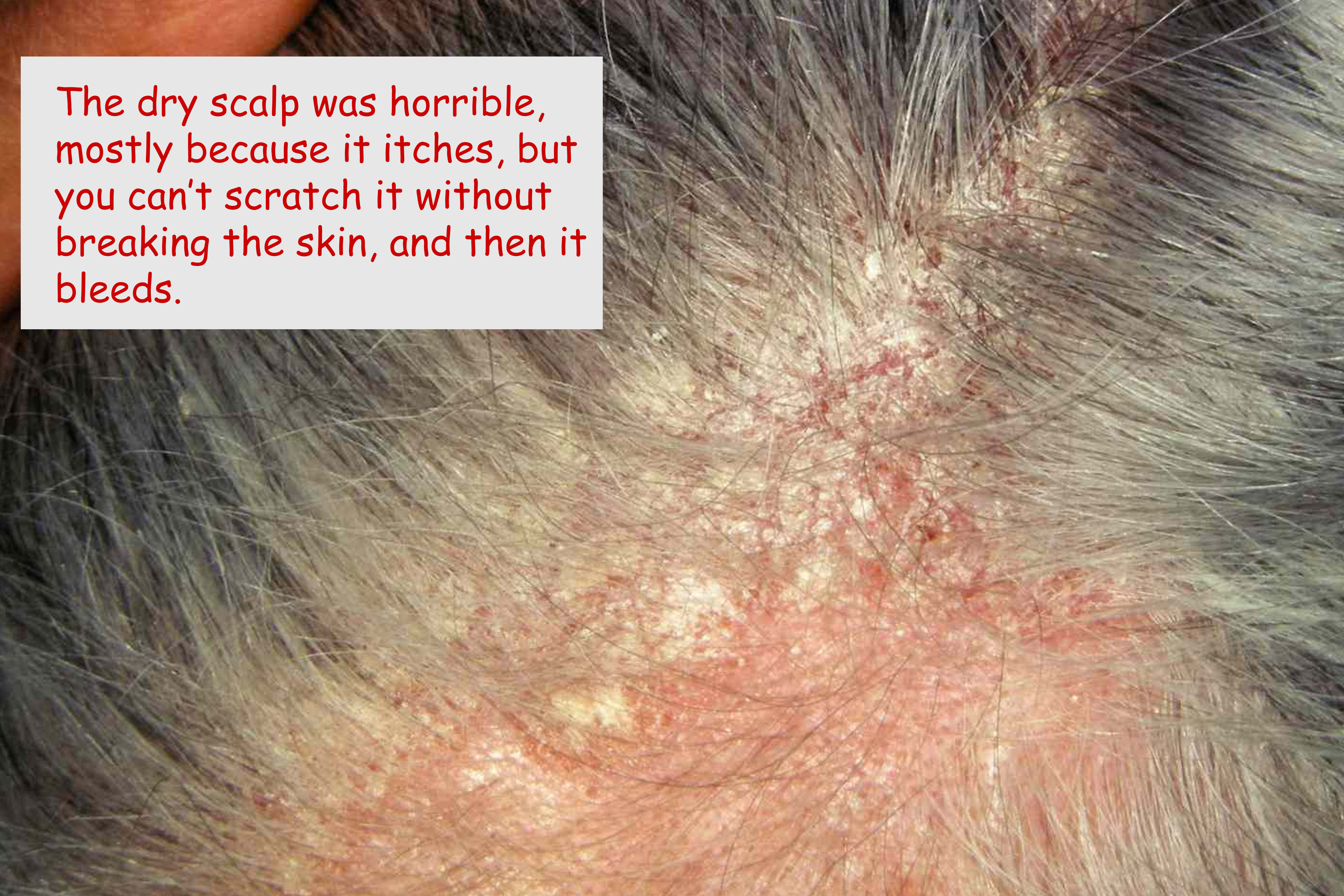

After months of research, I found a peptide-based serum that actually works with my body's natural processes. No hormones, no side effects, just real results that I can see and feel.

After months of research, I found a peptide-based serum that actually works with my body's natural processes.
The good news? Hair follicles are surprisingly resilient. In most cases, they don’t die—they go dormant. Like a light on dimmer mode, they need the right signal to turn back on.
In menopause, those signals are harder to send. But not impossible. Once I understood that I could support regrowth through calming inflammation and reactivating follicle signaling (without using synthetic hormones), everything shifted. That’s when I started looking into peptides.
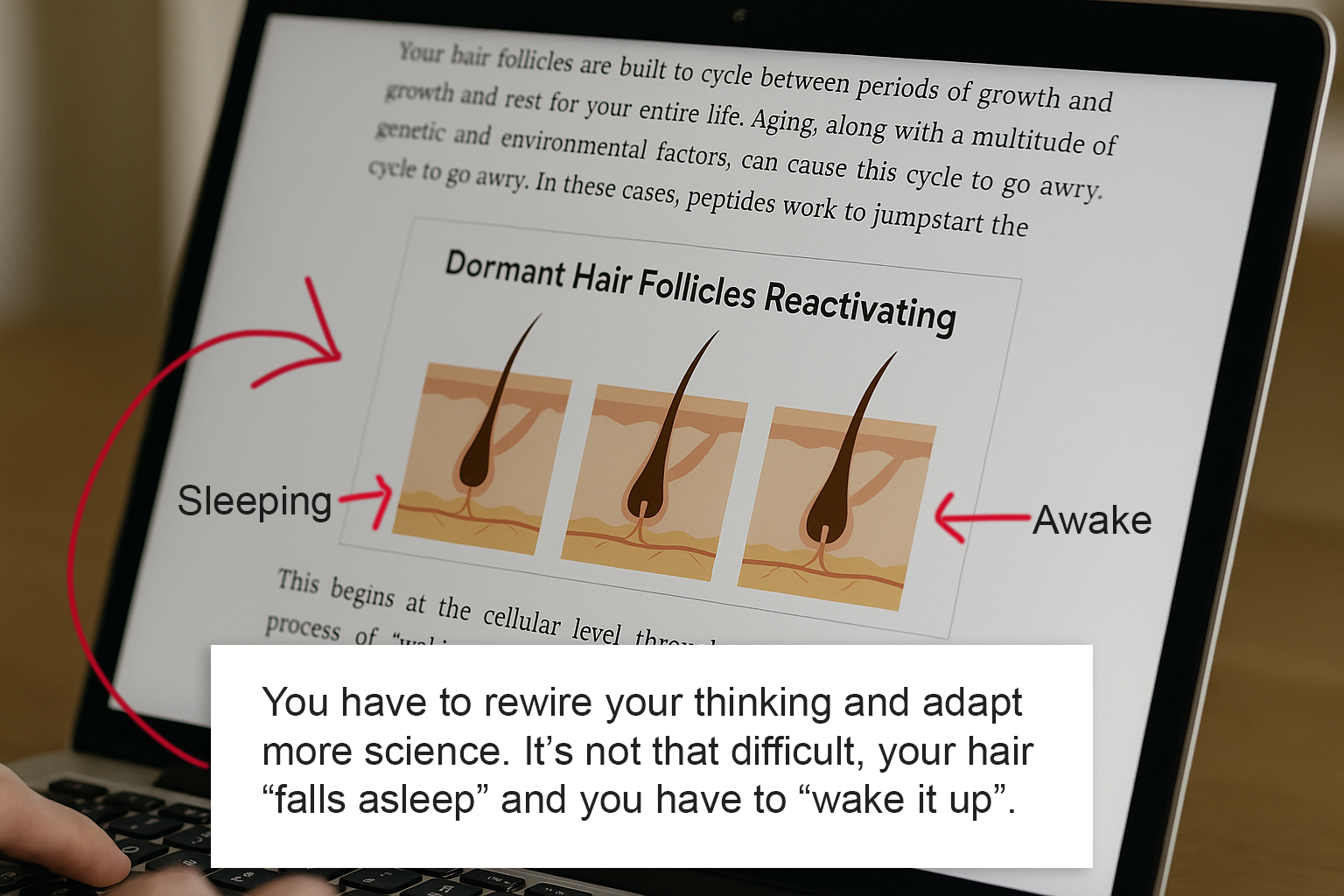
Peptides like GHK-Cu and Zinc Thymulin have been studied in skin regeneration for decades. But only recently have they been formulated into hair products that penetrate deeply and trigger regrowth.
What impressed me most was how they targeted inflammation and reawakened follicles—without messing with my hormones.


After months of thinning, I found a serum designed specifically for women over 40 — with 6 clinical-grade peptides, no hormones, and real results. If you're dealing with progressive thinning, this may be the turning point you've been waiting for.

After months of thinning, I found a serum with 6 clinical-grade peptides, no hormones, and real results.
There are so many trendy “miracles” out there. Rosemary oil. Scalp massagers. Collagen gummies.
But what made the difference for me was biologically active ingredients. Not surface-level hydration—real follicle signaling.
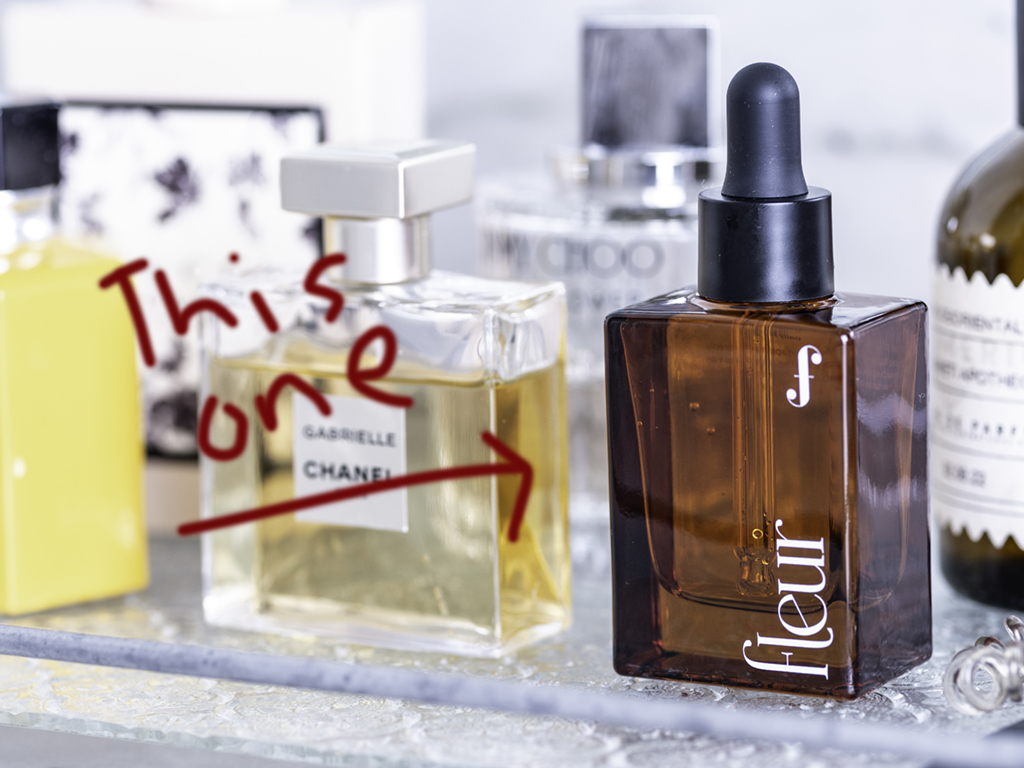
I’ve been using a serum that combines 6 clinical-grade peptides—including copper peptides, GHK Basic, and Zinc Thymulin. It also includes calming botanicals and zero hormones.
It’s designed for women like me—over 40, dealing with progressive thinning, and wanting results without side effects.
My temples have filled in. My part looks tighter. And most of all—I feel in control again.
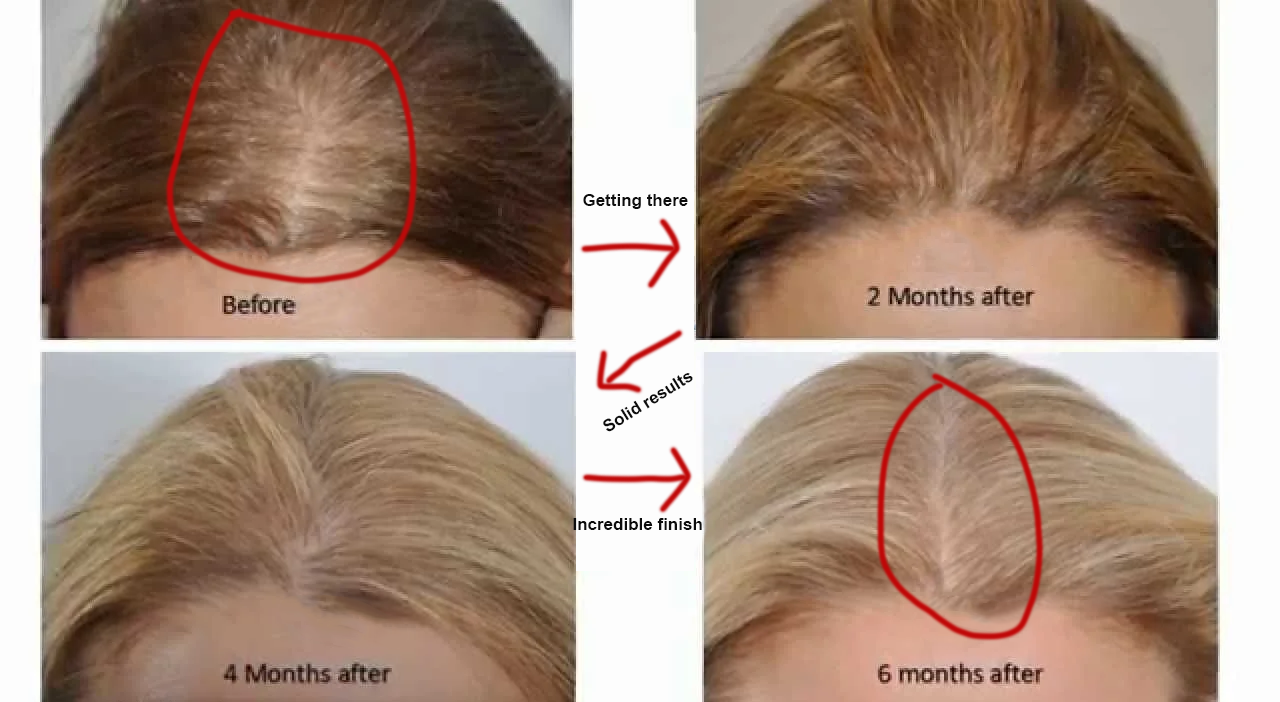
Hair loss made me feel invisible. Like I was fading.
But what I’ve learned—and what I hope this guide shows—is that you’re not stuck. You’re not broken. And you’re definitely not alone.
There’s real science. There’s hope. And yes, there’s a way forward.

The peptide serum that changed everything for me. After months of thinning, this was the turning point I needed. If you're ready to take control of your hair health, this may be your solution too.

The peptide serum that changed everything for me. After months of thinning, this was the turning point I needed.
Join the Conversation